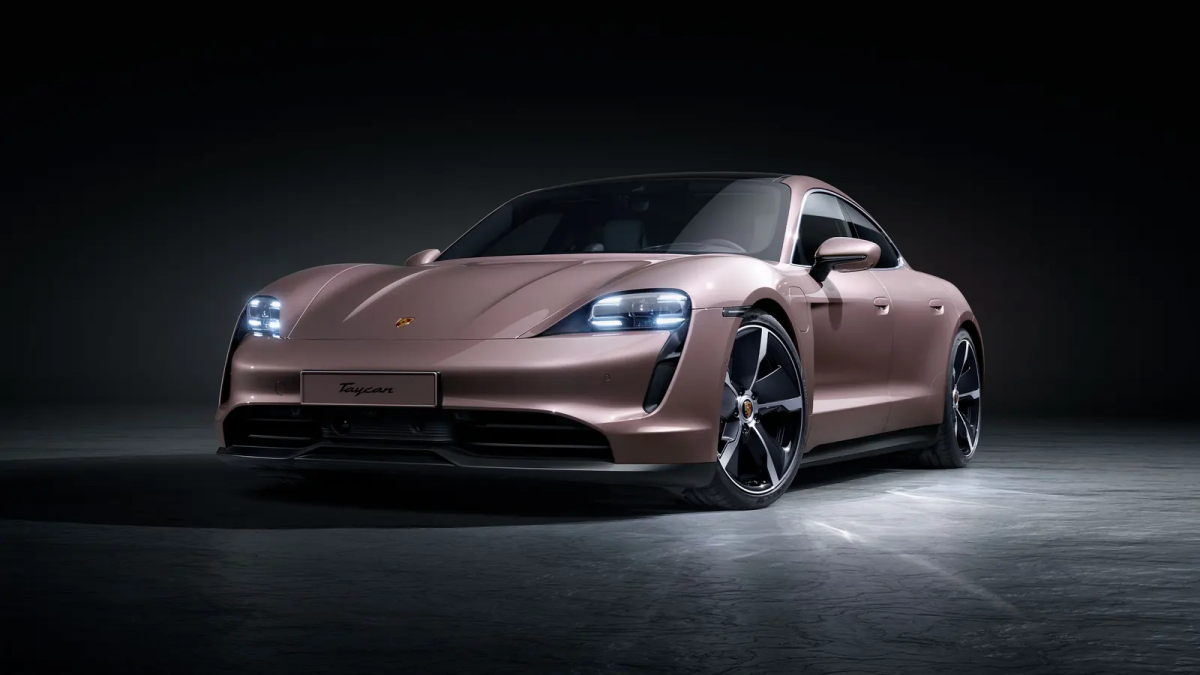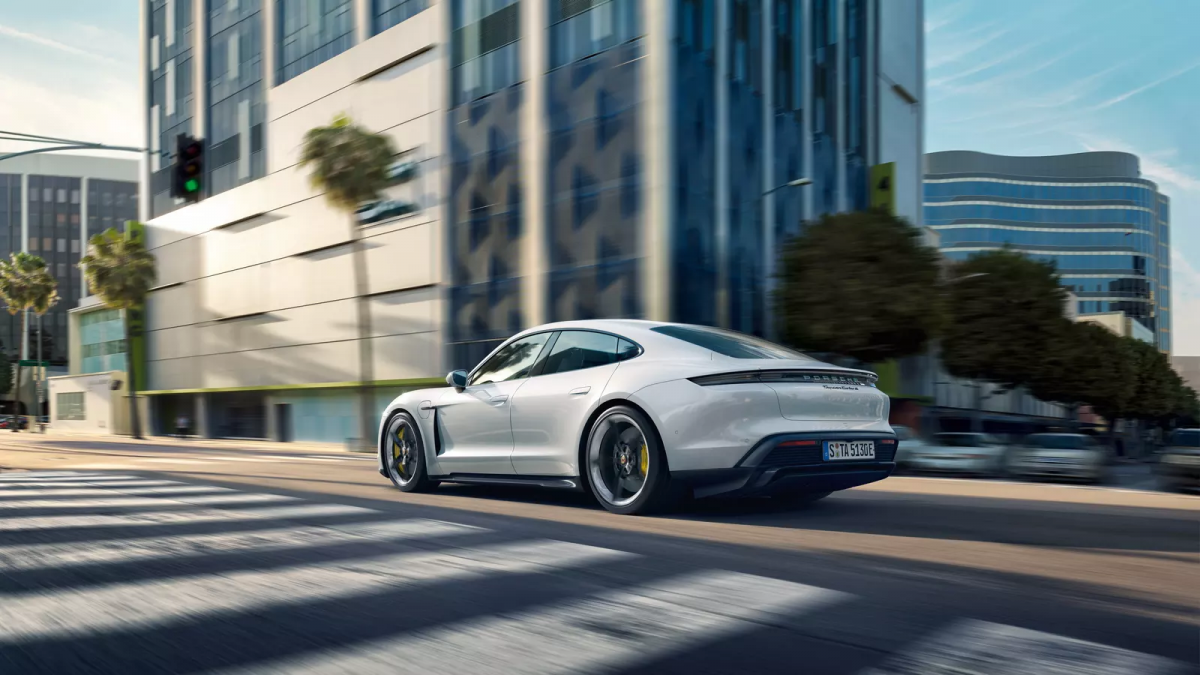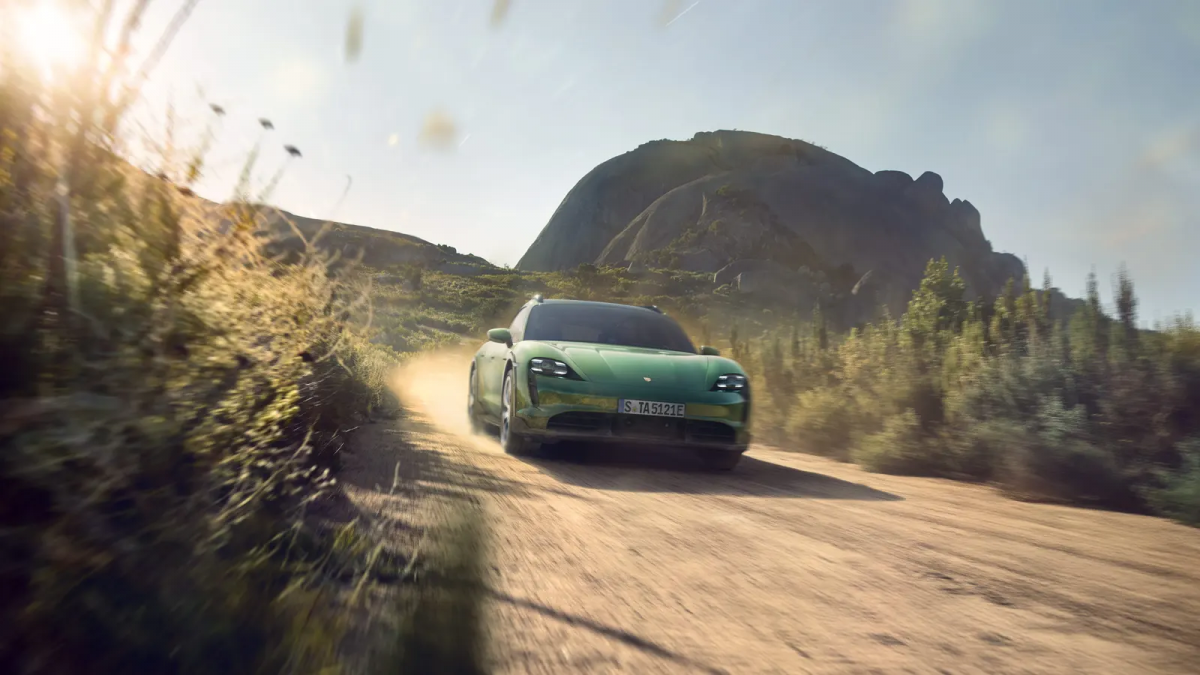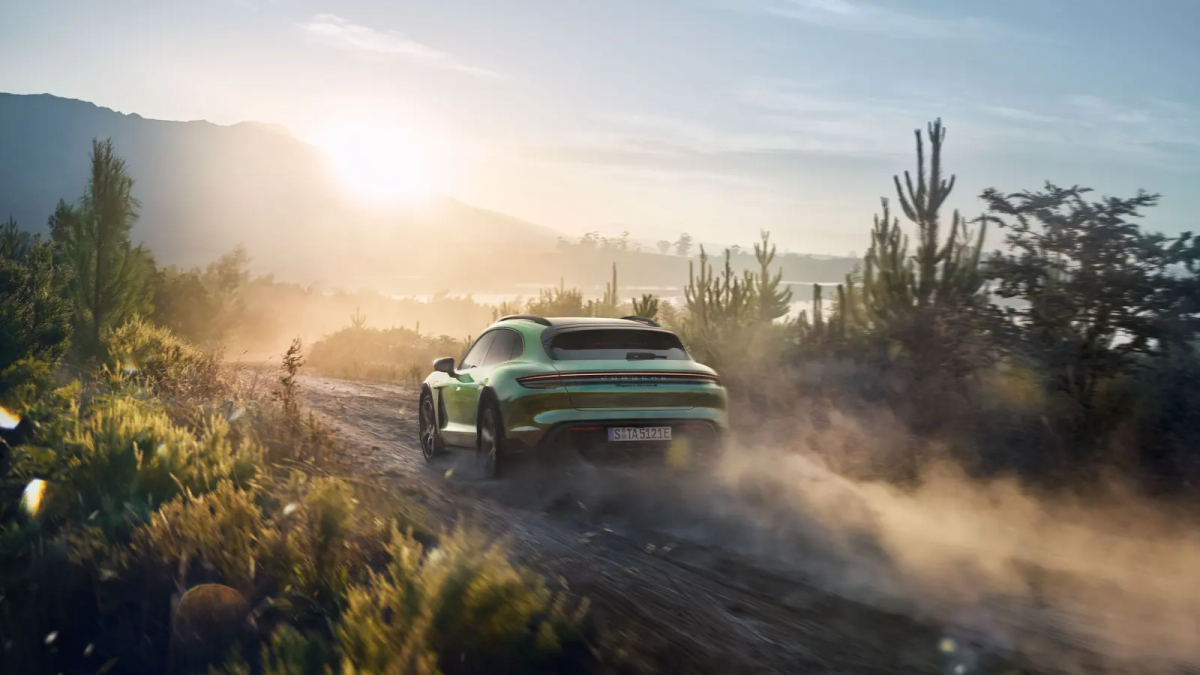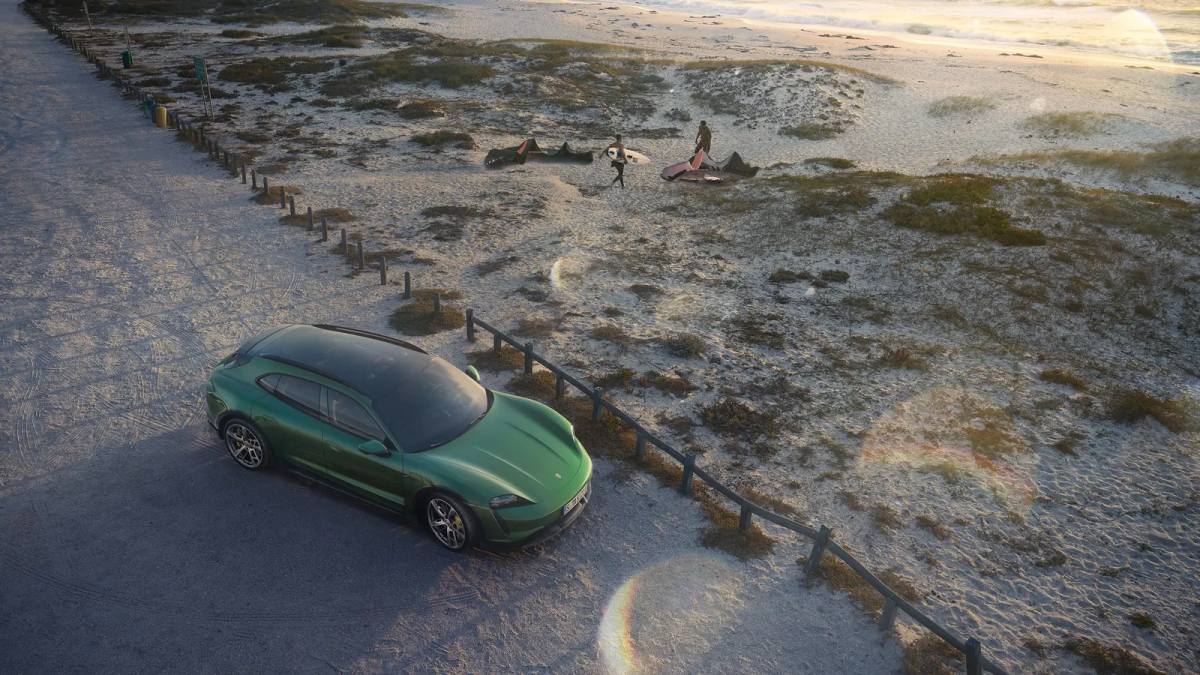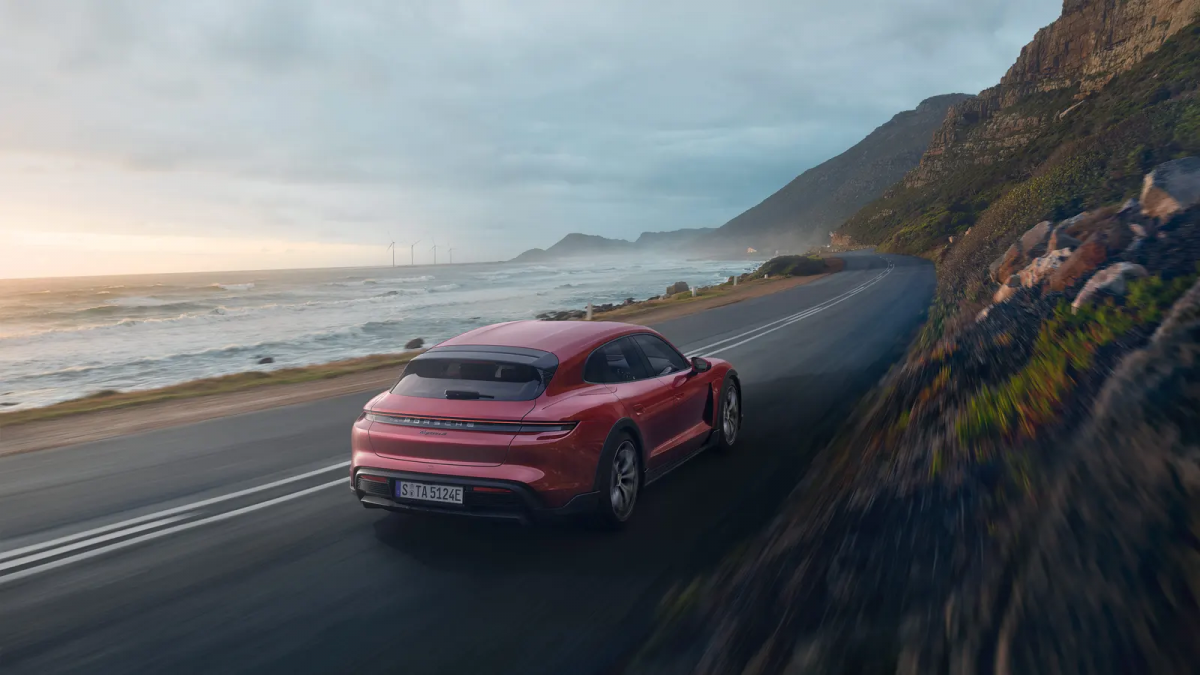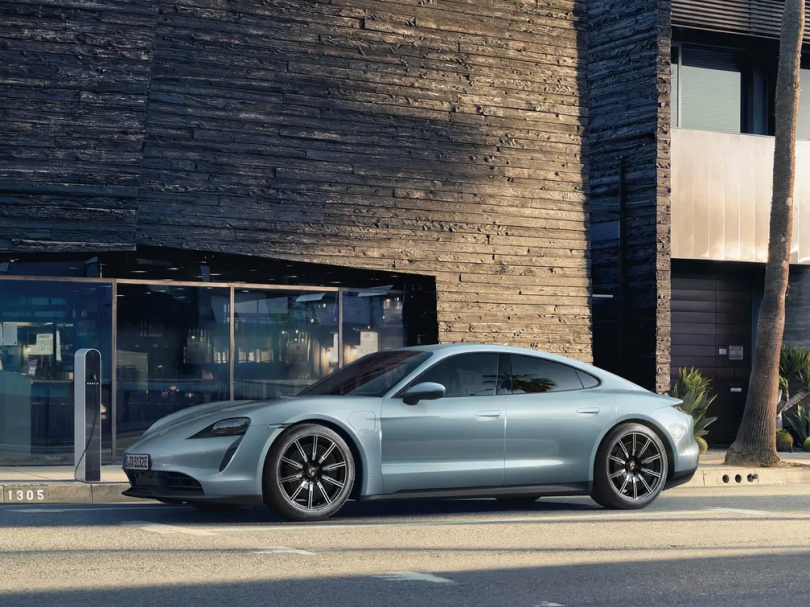German luxury car manufacturer Porsche has launched its fully-electric Taycan sedan and the Taycan Cross Turismo estate in India. Porsche offers the sedan version of Taycan in 4 variants- Standard, 4S, Turbo, and Turbo S. The Cross Turismo estate, on the other hand, is available in 4S, Turbo, and Turbo S variants, respectively.
The standard Taycan sedan costs INR 1.50 crore (ex-showroom), and the top-spec Turbo S costs INR 2.08 crore (ex-showroom). The 4S Cross Turismo estate costs INR 1.70 crore (ex-showroom), whereas the top-spec Turbo S costs INR 2.31 crore. Its rivals in India include the Audi e-tron GT, the Jaguar I-Pace, and the Mercedes EQC.
2021 Porsche Taycan & Taycan Cross Turismo: Design Details
As Porsche’s first-ever electric sports car, the Taycan shares its architecture with sister brand Audi’s recently launched e-tron GT. Similar to the 4-door Panamera, the Taycan features a complete design inspired by the 2015 Mission E concept car. At the front, the Taycan features LED Matrix headlamps with four integrated LED DRLs and slim air-flow ducts. Towards the rear, the Taycan sports a full-length LED light bar with integrated LED taillights. Being an estate version, the Taycan Cross Turismo gets an extra 30mm of ground clearance and additional body cladding.
2021 Porsche Taycan & Taycan Cross Turismo: Interior Details & Features
Inside the cabin, Porsche has ensured to equip both versions of the Taycan with a whole host of features. Both versions include 4 different screens at the front with touch-sensitive buttons for a clean and uncluttered cabin design. Thanks to floor-mounted battery packs, the Taycan features additional rear-legroom for passengers when compared to the Panamera.
Along with increased rear seating space, both versions sport a 400-litre boot with an 82-litre front trunk. Porsche offers both Taycans with a customizable 16.8-inch digital driver’s display and a 10.9-inch touchscreen infotainment system. Additionally, customers can opt for a second 10.9-inch touchscreen exclusively for the front passengers. The final 8.4-inch touchscreen controls all the climate-related functions of the EV’s.
The infotainment screen supports Android Auto and Apple CarPlay with wireless OTA updates for upgrading the battery and charging performance. The Turbo variants of the Taycan feature 20-inch alloy wheels, adaptive air suspension, dual-zone climate control, and a Bose sound system. On the other hand, the Turbo S variants add in 21-inch alloy wheels, upgraded brakes, and 18-way electrically adjustable seats.
Porsche Taycan & Taycan Cross Turismo: Powertrain Details
All versions of the Taycan feature all-wheel drive as standard, except for the entry-level variant, which uses rear-wheel drive. The standard Taycan produces 408 PS of power on the sedan version, whereas the 4S with dual-motors produces 530 PS. The 4S versions of the Taycan sport a top speed of 240 kph and achieve 0-100 kph in 4 seconds.
In the Turbo variant, the Taycan sedan and estate produce 680 PS in overboost launch control. The sedan and estate achieve a 0-100 kph time of 3.2 and 3.3 seconds, respectively. Finally, the top-spec Turbo S variants produce 761 PS and 1050 Nm, making them the most powerful EVs in India. The Turbo S Taycan sedan and estate can achieve 0-100 kph in 2.8 seconds and 2.9 seconds, respectively.
In terms of batteries, the RWD and 4S Taycan variants sport a 79.2 kWh battery pack. The Turbo and Turbo S variants, on the other hand, feature a 93.4 kWh battery pack. Additionally, customers can opt for the larger 93.4 kWh battery on the RWD and 4S variants of the Taycan. According to the WLTP test cycle, the RWD Taycan sports a 484 Km driving range on a single charge.
The 4S Cross Turismo Taycan has a 456 Km per charge driving range based on the WLTP testing cycle. The Taycan charges from 5-80% in 20 minutes using a maximum power of 350 kW. Using an 11 kW AC charger, the Taycan takes 9 hours to reach 80%. Meanwhile, a 50 kW DC charger achieves the same amount of charge in 93 minutes.
Also Read: Audi e-tron GT crowned as the most beautiful car of the year
